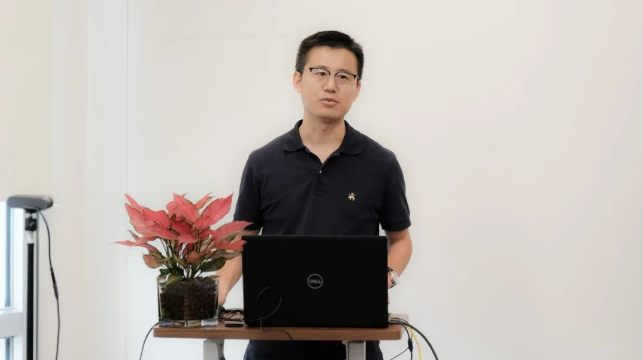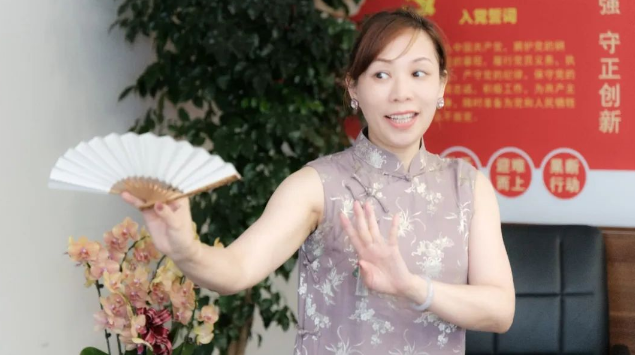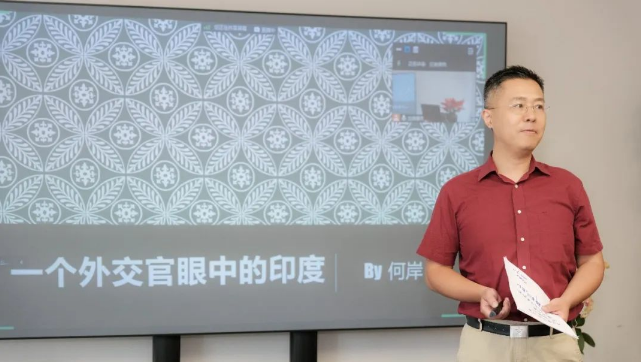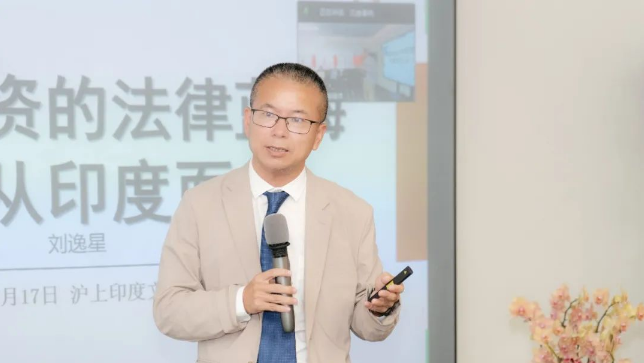Translator:Xiong Yajie
On July 17, 2023, the "Wind from the Sea: Shanghai Indian Culture Salon" was successfully held in Landing Law Offices. The event invited An He, former First Secretary of the Embassy of the PRC in Republic of India, Xiao Hu, Chairman of Chengyue Culture, and teachers from the Shanghai Pudong Shanghai-style Cheongsam Cultural Exchange Center and guided everyone to experience Indian culture from multiple perspectives such as diplomacy, history, and society.
01
Opening Speech

Xinli Li, Senior Partner of Landing Law offices
In the opening speech, Xinli Li, a senior partner of Landing Law offices, first explained the concept of "strong internationalization" of Landing Law offices. The India office is the earliest office that Landing established, and the fate between Landing and India originated from that. Lawyer Xinli Li pointed out that lawyers serving clients for overseas investment not only need to be familiar with foreign laws, but also need to enhance their understanding of local business, culture, society and other aspects. The guests invited to this Salon have a deep understanding of India and hope to provide a good opportunity for everyone to understand Indian culture.
02
Indian Elements in Chinese Classical Painting and Calligraphy

Xiao Hu, Chairman of Chengyue Culture and Curator of Painting and Calligraphy Exhibition
Xiao Hu first shared with everyone the history of Chinese classical painting and calligraphy after the introduction of Indian culture. By researching the historical development of Chinese painting and calligraphy, we can get a glimpse of the introduction, preservation and integration of Indian culture. The Indian elements displayed in Chinese painting and calligraphy are not a simple exchange of calligraphy and painting techniques between China and India, but a vivid manifestation of Indian culture on paper after it was spread to China.
Ancient Indian culture once had a profound influence on China. Early in the agrarian era, India's influence on China was mainly in agriculture. For example, at that time, India's agriculture was developed and seasoning was abundant. At the same time, China was still in the era of slash-and-burn cultivation. Almost all the seasonings came from the Western Regions, and 70 to 80 percent of the seasonings in the Western Regions came from India. Since then, India's influence on China has risen to the cultural level, and Indian culture represented by Buddhism began to move toward China and take root. Today, Buddhism has declined in India, but it still thrives in China.
03
Shanghai Cheongsam Culture Beauty Show

Shanghai Pudong Shanghai-style Cheongsam Cultural Exchange Center
The cheongsam exhibition is a common form of cultural exchange in the diplomatic work of the Embassy of the PRC in Republic of India. The performance teacher of Shanghai Pudong Shanghai-style Cheongsam Cultural Exchange Center gave performances such as "Love in Long-life Hall" to everyone, vividly demonstrating the charm of art and the cultural power behind it.
04
A diplomat's View of India

An He, former First Secretary of the Embassy of the PRC in Republic of India and tutor of Graduate School of Ocean University of China
An He showed everyone the details of the diplomatic work in India from the August 1st reception, food and clothing, yoga festival, etc., and introduced the overview of Indian tourist attractions such as Delhi, Jaipur, and Goa. At the same time, the representative collections of Harappa, Gandhara and other civilizations in the National Museum of India are introduced, vividly showing the rich connotations of Indian culture.
The exchanges between contemporary China and India can be traced back to 1938 when Indian doctor Lihua Ke accompanied the Indian medical team to China to assist in the Anti-Japanese War. India and China have been mirror images of each other since ancient times. Contemporary India and China are also important countries in Asia. Today, China-Indian relations have fallen into a trough, but folk cultural exchanges in Beijing, Shanghai and other places are still frequent.
05
Legal Blue Ocean for overseas investment - India

Yixing Liu, Director of Landing Global Management Committee
Director Yixing Liu believes that both India and China have transformed from an agricultural society to a modern industrial society in the last century, and there are great similarities in population, territory, nation-founding history and social development. Currently, there is a certain gap between India and China in terms of development, and India has a certain dependence on China's development model. In general, China and India should become partners in the rise of great nations.
After the founding of the People's Republic of China, there was a great information asymmetry in the exchanges between China and India, which led to a lot of misunderstandings. In the process of investing in India, foreign investors may face various difficulties and should maintain an objective understanding of India's democratic system and legal system in combination with India's social, cultural and historical conditions. This Cultural Salon is an opportunity to enhance everyone’s understanding and interest in Indian society and culture.











